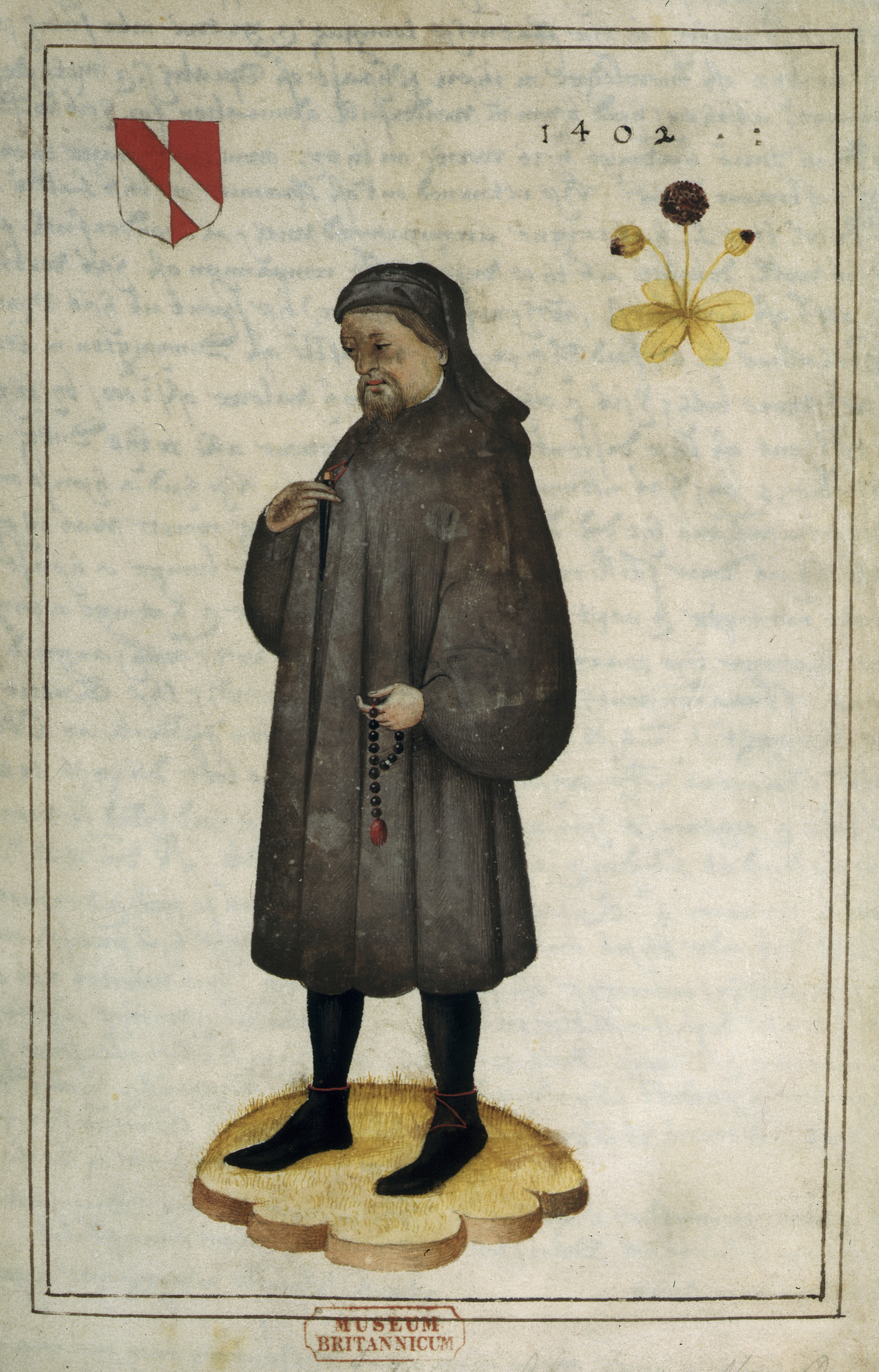
Portrait of Chaucer, 16th century
Topics on the Page
Overview of Tales (1387 to 1400)
Background on Chaucer
How to Read Middle English
Class in The Canterbury Tales
Gender in The Canterbury Tales
Modern Representation of The Canterbury Tales
- Poet Patience Agbabi reimagined the tales through poetry and Hip-Hop in her book Telling Tales.
Overview of The Canterbury Tales
|
The Canterbury Tales is a collection of 24 tales told by a fictional band of pilgrims on a journey to Canterbury, England in the Middle Ages.
-
The book features stories from 24 pilgrims, all of which from different backgrounds. As a result, each story was informed by the teller's experiences, with a special emphasis on their social class. It is a way to teach students about the different classes and social structure of feudal society.
-
The greatest implication of the Canterbury Tales was that, “the Tales validated the use of Middle English in vernacular writing as it brought the characters and their stories to life [and] popular fiction of the Middle Ages was written in French verse before Chaucer elevated Middle English poetry to the same height of popularity.” (https://www.worldhistory.org/Canterbury_Tales/)
The Canterbury Tales is still relevant today, as it is often seen in modern film and literature like Patience Agbab’s book Telling Tales.
|
The Clerk, one of the pilgrims in Chaucer's Canterbury tales

Each Tale is told by a different Pilgrim on the pilgrimage, with their social status informing the context of their tales.
Click here for a link to a character breakdown: https://owlcation.com/humanities/Canterbury-Tales-Characters
Chaucer's Canterbury Tales from the Electronic Literature Foundation has side-by-side versions in Middle English and Modern English
Here is a English translation of The Canterbury Tales
Information on the influence of The Canterbury Tales: https://www.gla.ac.uk/myglasgow/library/files/special/exhibns/chaucer/influences.html
 |
| Chaucer's Canterbury Pilgrims, William Blake, 1808 |
Middle English
The Canterbury Tales was written entirely in Middle English, the phase of English Language development prior to the English spoken today.
Middle English Pronunciation Guide: https://sites.fas.harvard.edu/~chaucer/teachslf/less-2.htm
Video on Pronunciation: https://www.youtube.com/watch?v=HXMypzdWxsc
 Why Are The Canterbury Tales So Difficult to Read?
Why Are The Canterbury Tales So Difficult to Read?
The reason why the Canterbury Tales is so difficult to read for modern-day English speakers is because it was written before the Great Vowel Shift. In essence, the Great Vowel Shift consisted of long vowels being shifted upwards; that is, a vowel that used to be pronounced in one place in the mouth would be pronounced in a different place, higher up in the mouth” (Furman). This shift is one of the primary differences between Early Modern English and Middle English, hence why the Canterbury Tales can be challenging for readers today.
Harvard University published a great article on both the relationship between The Great Vowel Shift and Chaucer’s writing, as well as a guide of how to read the Canterbury Tales: https://chaucer.fas.harvard.edu/pages/great-vowel-shift
Here is another resource (video) explaining the Great Vowel Shift and its relation to the history of Britain: https://www.youtube.com/watch?v=VOOAb7erAmE


Social Class in The Canterbury Tales
As previously mentioned, this text can be used to teach social hierarchy in the Middle Ages in England.
A lesson plan and video on Social Class in The Canterbury Tales: https://study.com/academy/lesson/the-canterbury-tales-social-class-status.html
Gender in the Canterbury Tales
Modern Representations of The Tales
In both film and literature, The Canterbury Tales have been updated for a modern context to resonate with new audiences.
Film Adaptations
Page detailing The BBC's 2003 adaptation of select tales for modern audiences: http://www.bbc.co.uk/drama/canterburytales/
- The episodes themselves can be accessed through The University of Massachusetts Library Archive.
Literature

Author Patience Agbabi reimagined the tales for a modern audience through poetry and Hip-Hop in her book Telling Tales.
Background on Patience Agbabi:
Games
 Immerse yourself into the world of the Canterbury Tales with this interactive choice-based game!
Immerse yourself into the world of the Canterbury Tales with this interactive choice-based game!
- Play the first 3 chapters free, or buy the full game
Comments (0)
You don't have permission to comment on this page.